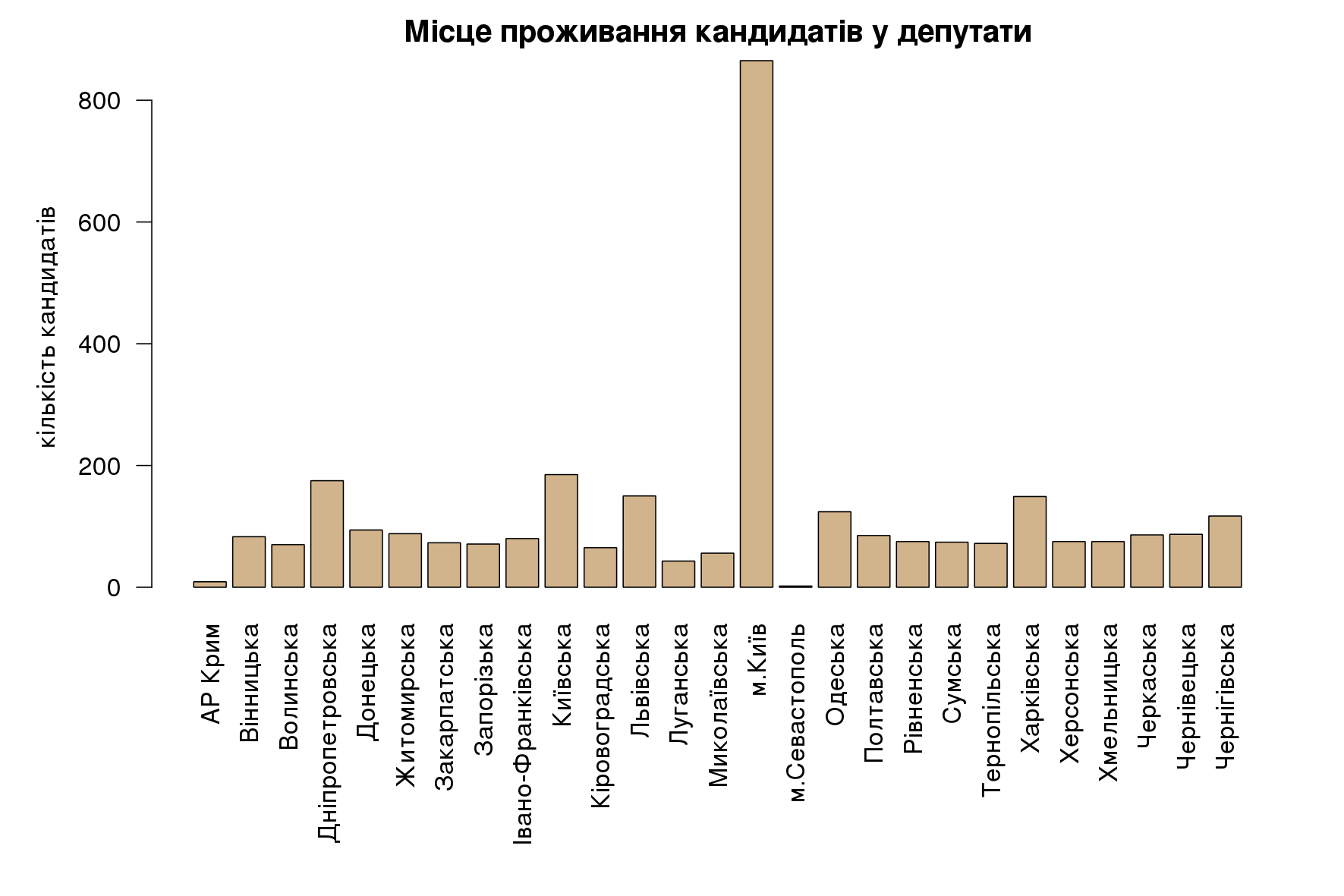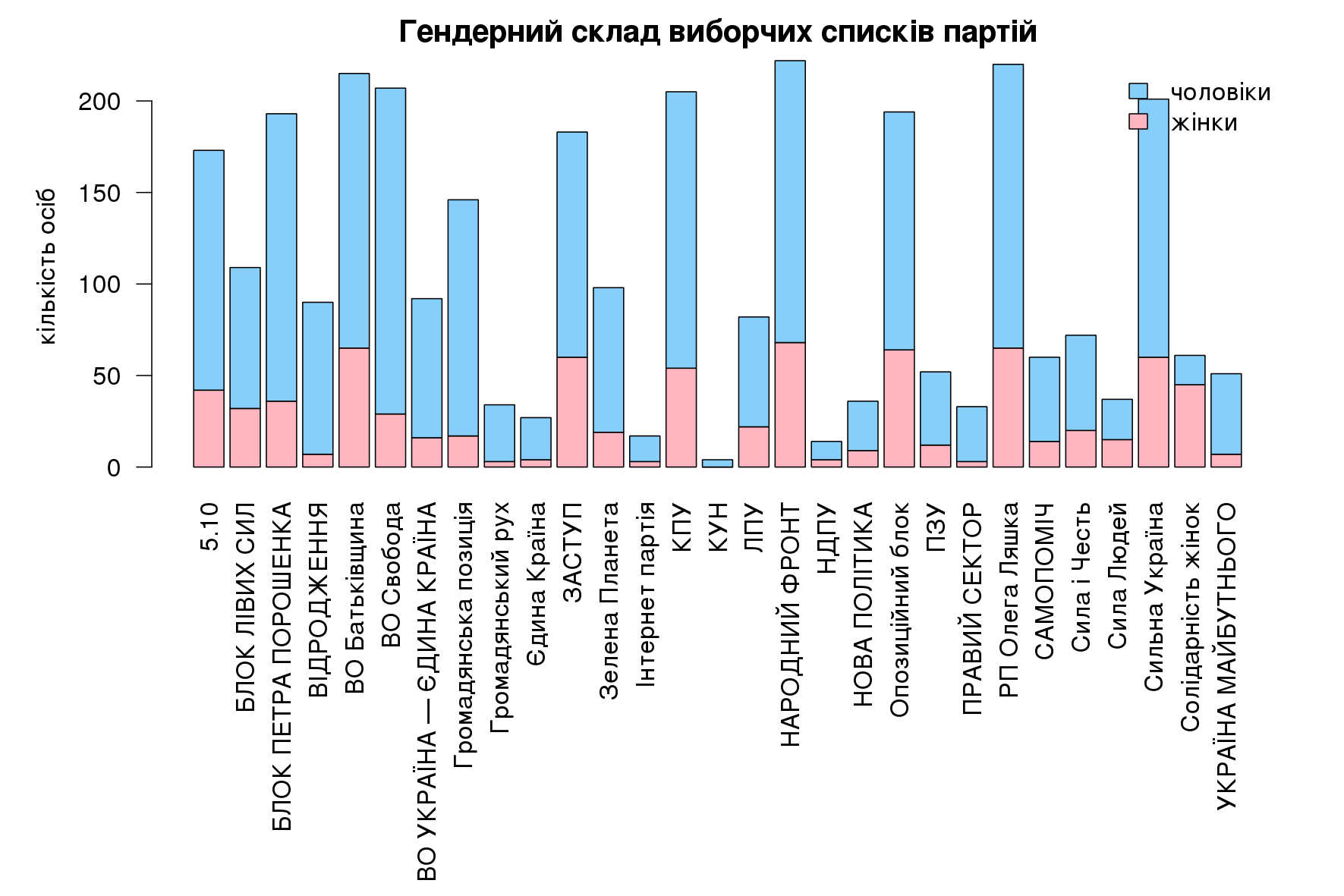To continue the topic of information portraits of MP candidates in Early Parliamentary elections scheduled for 26 October 2014, OPORA made a joint portrait of party list candidates.
This description will be slightly shorter - we don't have information about birthplace and education of candidates (this information wasn't published on website of the CEC).
To make a joint information report, we used information about all candidates included in party lists - 3,128 persons. However, we didn't delete information about 14 persons who refused to participate in the elections.
We used the programming language R on the basis of Debian GNU/Linux OS to process information and create diagrams. To make the diagrams look better, we shortened names of parties.
Thus, on 17 October 2014, website of the CEC contained information about 3,128 party list candidates, nominated in single-member district. 14 of these candidates refused to participate in the election campaign.
Joint information about place of candidates' residence looks like this:

Diagram 1 — Place of residence of MP candidates
Candidates are settled quite unevenly. Kyiv is on the first place, with 865 candidates living in it, what is almost one third. Kyiv oblast (185) and Dnipropetrovsk oblast (175) are on the second place. The smallest number of candidates live in Sevastopol city (2), the AR Crimea (9) and Luhansk oblast (43).
There are 795 women and 2333 men. Despite the correlation is slightly better that among majoritarian candidates (500/3007), it's still very low. See gender representation in party lists on diagram 2:
Diagram 2 — Gender representation in party lists
As we can see, there are no surprises on Diagram 2 - women are in minority in all parties. The only party that has majority of women is the Solidarity of Women of Ukraine (45 women, 16 men). The smallest number of women has the Vidrodzhennia party (7 women, 83 men), the Civic movement (3 women, 31 men) and the Right Sector (3 women and 30 men). The Congress of Ukrainian Nationalists has 4 candidates in party list, all men.
The histogram of age is almost the same as we received in analysis of majoritarian candidates (diagram 3):
Diagram 3 — Age of MP candidates
According to the CEC, Pavlychko Dmytro Vasyliovych is the eldest candidate: he is #133 in the Petro Poroshenko Block party list; was born on 28 September 1929. Amidala Padme Mykolaivna is the youngest candidate: she is #4 in the Internet party list; was born on 2 October 1993.
The most common surnames are: Kravchenko (12), Melnyk (12), and Shevchenko (11). The most common women names: Olena (78), Nataliia (60), and Olha (60). Similarly to majoritarian candidates, the name Oleksandr is the most common among men (250). The second and third popular names are: Serhii (168) and Volodymyr (151).
Thus, the portrait of an average party list candidate looks like this: it's a men, 40-45 years old, Oleksandr, living in Kyiv.